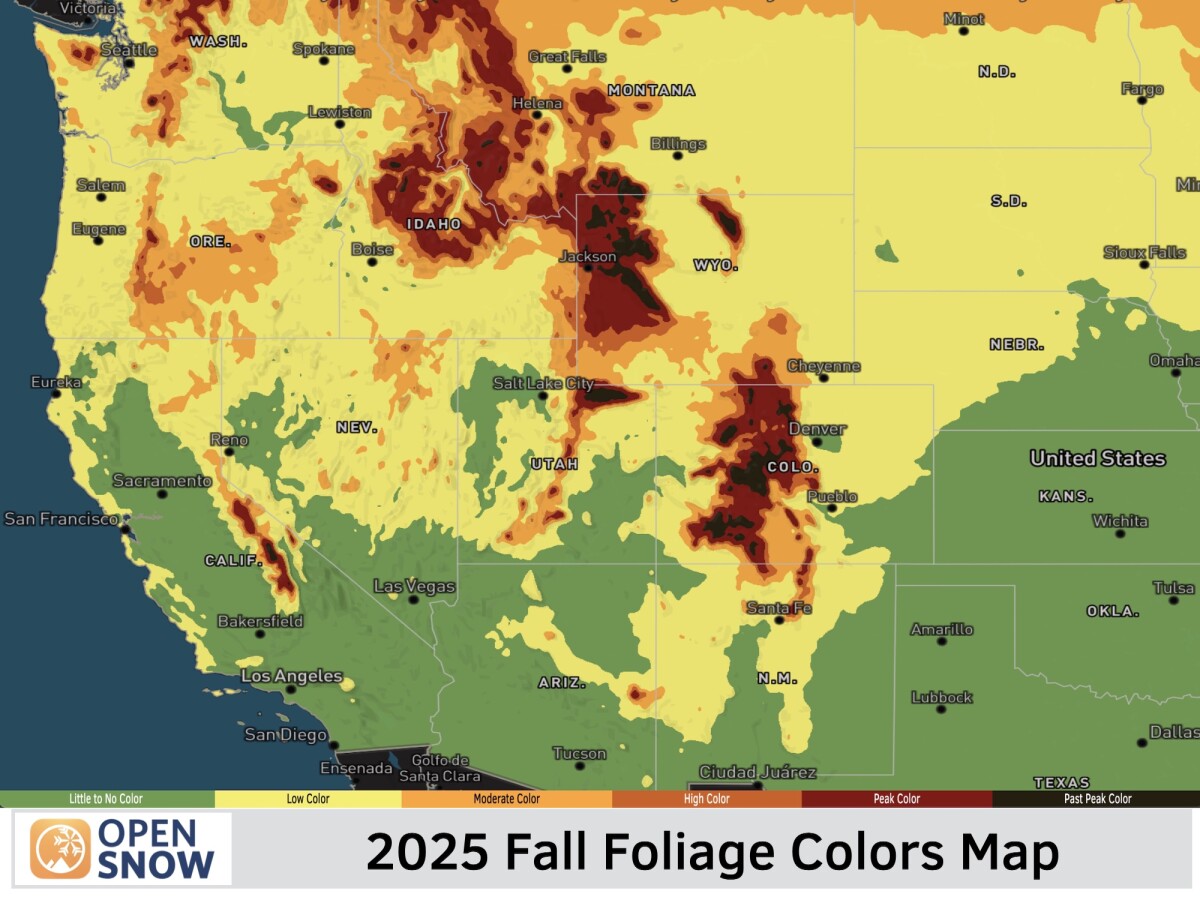News

By Alan Smith, Meteorologist Posted 2 years ago June 2, 2023
What is a Shortwave?
When reading Daily Snows, you may have seen our forecasters use the term "shortwave" to describe a weather system that produces snow or rain.
In the weather world, "shortwaves" are often used interchangeably with more informal terms such as "disturbances" or "pieces of energy" to describe smaller-scale weather systems.
However, shortwaves are one of the key drivers in the atmosphere that produce impactful weather.
Longwaves vs. Shortwaves
Throughout the mid-latitudes of both the Northern and Southern Hemispheres, the jet stream meanders across the globe in wavy patterns, forming ridges and troughs.
We often mention troughs, or "troughs of low pressure" to describe weather systems or patterns that favor active weather.
Learn More → Ridges and Troughs
On a large scale, we examine longwave troughs as broader dips in the jet stream (toward the equator) that are more noticeable when looking at weather maps. Longwave troughs can be thought of as overall patterns that are conducive to a single weather system, or multiple weather systems over a period of time.

Longwave troughs exist in the upper atmosphere between 18,000-30,000 feet above sea level and are influenced by the movement of the jet stream.
Shortwave troughs, on the other hand, exist in the middle levels of the atmosphere, typically between 10,000-18,000 feet above sea level.
Here are some other facts about shortwaves:
- Shortwaves are smaller-scale "kinks" in the flow that are typically embedded within a longwave trough, and tend to be the "weather makers" that contribute to heavier/more widespread precipitation and in some cases stronger winds.
- Occasionally, shortwaves can exist outside of longwave troughs as well, and can even rotate around ridges.
- Shortwaves act as a lifting mechanism for moist air parcels to rise, cool, and condense into precipitation.
- Shortwaves are less obvious when examining weather maps and models, and often appear as minor disruptions or "mini troughs." They can also be spotted on weather maps when examining vorticity, which refers to "spin" in the upper atmosphere that contributes to rising air.
Below: Example of a weather map with a longwave trough over Western North America, and numerous shortwaves labeled throughout North America. The yellow/orange/red colors indicate vorticity maximums that can be indicative of shortwaves.

Below: Example of a shortwave moving across the Rockies in the Western U.S.

- Shortwaves are faster-moving and shorter-lived compared to longwaves. However, if a longwave pattern is particularly slow-moving or nearly stationary, multiple shortwaves can move across the same regions in succession, resulting in a prolonged period of active weather with frequent precipitation.
- Shortwaves can sometimes coincide with cold fronts that extend down to the surface, while other times, shortwaves involve only slight cooling in the upper atmosphere with little to no change in temperature at the surface aside from the effects of increased cloud cover.
How Do Shortwaves Impact Winter Weather and Skiing?
Shortwaves are usually a good thing if you are hunting for fresh powder. In the mountains, shortwaves combined with favorable orographic winds can work together to produce significant snowfall at ski areas and backcountry zones.
Rising air associated with shortwaves can result in periods of heavier snow across lower elevation areas as well in addition to higher terrain.
Shortwaves can sometimes result in quick one-and-done snow events that last for 3-12 hours. But other times, a long-lived winter storm involving a plume of moisture can persist for 24-48 hours or more with embedded shortwaves resulting in pronounced periods of heavy snowfall rates.
One of our favorite patterns involves a slow-moving or stationary longwave trough that remains over a region for an extended period of time (several days or more), with frequent shortwaves within the larger scale flow that provide consistent powder refreshes on a daily basis, even if 24-hour snow totals are modest most days.
This type of pattern can keep conditions fresh on the slopes for an extended period of time rather than a "one and done" big storm.
How Do Shortwaves Impact Summer Weather and Outdoor Recreation?
Shortwaves can act as a trigger for thunderstorms during the summer months, often resulting in widespread coverage of thunderstorms and/or multiple rounds of thunderstorms.
The three key ingredients for thunderstorms include moisture, instability, and lift. Shortwaves are a source of lift needed to set warm, moist air currents into motion. And shortwaves combined with favorable orographic lift can result in numerous mountain thunderstorms with lightning posing a hazard to hikers, climbers, and other outdoor enthusiasts.
Across the Western U.S., "sneaky" shortwaves that are not always obvious on weather maps can interact with moisture from the North American Monsoon to result in upticks in thunderstorm activity, along with increased threats for lightning, heavy rain, and flash flooding.
Shortwaves often involve stronger wind shear as well, which refers to changes in wind speed and wind direction as altitude increases. This can result in strong to severe thunderstorms, with frequent lightning, hail, and/or strong winds.
About The Author




